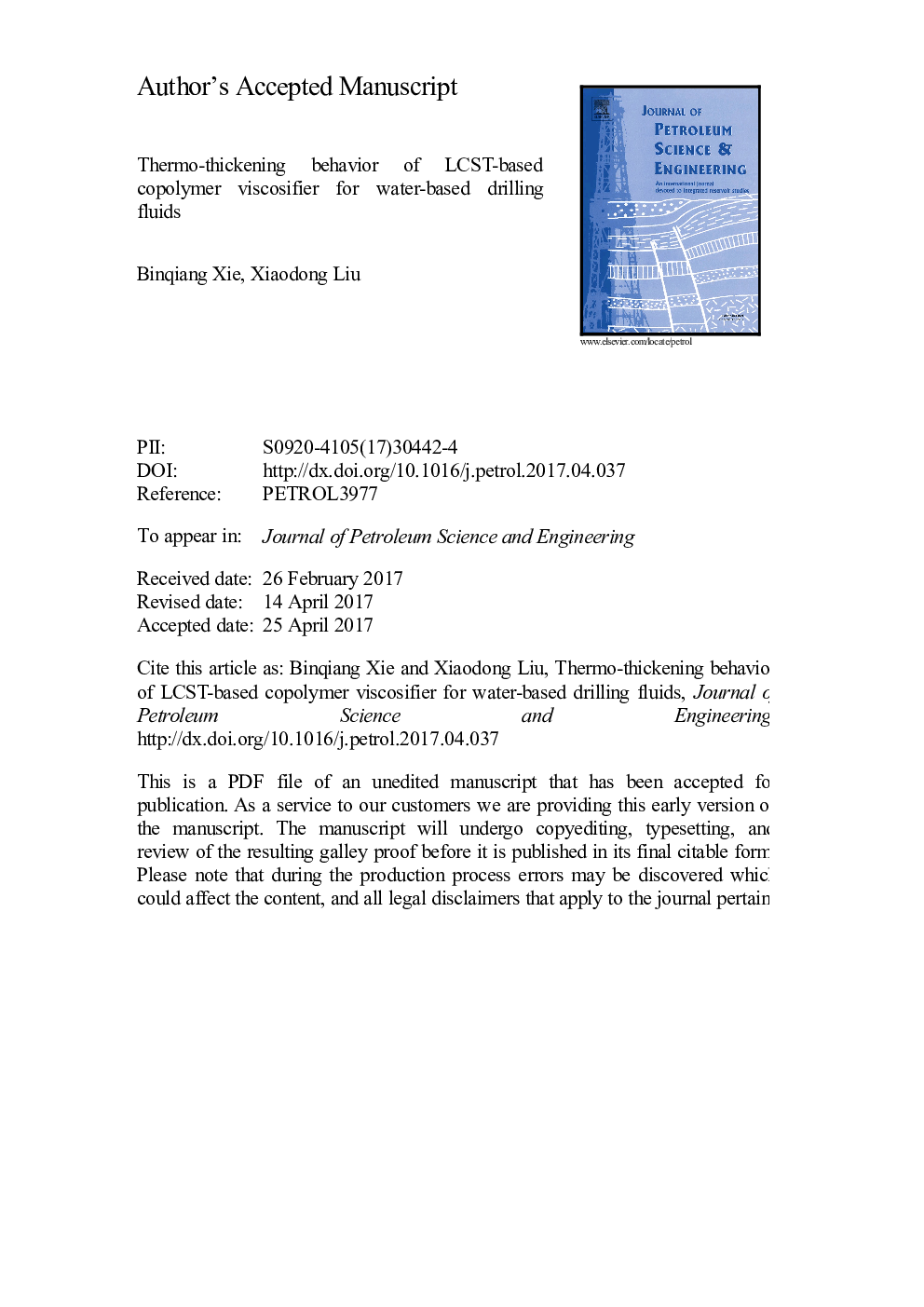| Article ID | Journal | Published Year | Pages | File Type |
|---|---|---|---|---|
| 5484211 | Journal of Petroleum Science and Engineering | 2017 | 24 Pages |
Abstract
Thermo-thickening polymers have gained a strong interest due to its attractive properties and had great potential for making up for the deficiency of viscosity of low-solid water-based drilling fluid at high temperature. The work in this paper was focused on studying the thermo-thickening behavior of a new class of LCST-based (Lower Critical Solution Temperature) polymeric viscosifier for water-based drilling fluid. The additives, which were obtained in our previous work, showed good temperature resistance and thermo-thickening behavior in water-based drilling fluid. However, the influence of molecular composition of copolymer on thermo-associative behavior was still unsettled. Based on structure/properties relationships of copolymers, this paper aimed to investigate the thermo-association behavior of LCST-based copolymer in drilling fluid and the role of molecular composition in thermo-assembling behavior. For that purpose, five copolymers with different NVCL content were prepared with same synthetic process. Thermo-associating behavior of LCST-based copolymer in no-solid freshwater base fluid (NSFBF) and low-solid freshwater base fluid (LSFBF) was investigated by rheometer. Results from rheological tests showed that the interesting thermo-thickening behavior was intimately related to NVCL content. Only when the NVCL content was confined at a certain range, it would appear obvious thermo-thickening phenomenon above the critical associative temperature (Tass). And Power-Law and Herschel-Bulkley model were the best fit model for rheology of polymeric fluids. In relation with macroscopic viscosity properties, the phase change process in thermo-association was monitored by Differential scanning calorimetry (DSC) and H1-NMR spectroscopy. Results from DSC indicated that polymers displayed similar endotherms process in NSFBF and LSFBF. However, compared to LSFBF, the phase transition of polymer in NSFBF showed the lower phase transition temperature (Tp) and the higher heats of transition (ÎH). H1-NMR spectroscopy showed that PVCL chains gradually became hydrophobic upon heating and the resulting hydrophobic association micro-domains led to the increase in viscosity. Furthermore, the values of Tass and Tp were compared to analyze the thermo-associative process. The polymer showed potential application as thermo-thickening viscosifier for water-based drilling fluid.
Related Topics
Physical Sciences and Engineering
Earth and Planetary Sciences
Economic Geology
Authors
Binqiang Xie, Xiaodong Liu,
